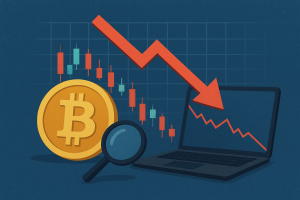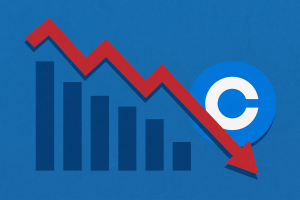Introduction
The financial markets reacted positively to the release of robust US payroll data, fueling a surge in equities, bond yields, and the US dollar. Investors have been closely watching economic indicators like employment numbers, and the latest report exceeded expectations, signaling continued economic resilience despite ongoing concerns over inflation and interest rates. As markets digest this information, the implications for various sectors and asset classes are becoming clearer. In this article, we explore the details of the payroll data, the market response, and what investors should consider moving forward.
US Payroll Data Exceeds Expectations
On October 4, 2024, the US Labor Department reported a stronger-than-expected increase in non-farm payrolls for the month of September. The data revealed that employers added 350,000 jobs, surpassing the consensus forecast of 275,000 jobs. This marked a significant acceleration from the previous month, reinforcing the perception that the US economy is weathering challenges such as rising interest rates and global economic instability.
Unemployment remained steady at 3.8%, a low figure indicative of a tight labor market. Additionally, wage growth picked up, with average hourly earnings rising by 4.6% year-over-year, higher than the expected 4.3%. The combination of job growth and wage gains has bolstered consumer spending power, which is vital for sustained economic expansion.
This robust payroll data alleviated fears of a slowdown, contributing to a boost in investor confidence. The markets responded swiftly, with equities rallying, bond yields rising, and the dollar appreciating against major currencies.
Equities Surge As Investors Eye Economic Strength
Following the release of the payroll data, US stock markets experienced a notable surge. The S&P 500, a key benchmark for US equities, rose by 2.5%, recovering some of the losses incurred earlier in the month due to concerns about rising interest rates. The Dow Jones Industrial Average also closed at a record high, gaining over 300 points as investors bet on continued economic strength.
Tech stocks, which had been under pressure in recent weeks, led the charge, with companies like Apple, Microsoft, and Tesla seeing significant gains. These growth-oriented stocks are often sensitive to interest rate expectations, and the payroll data helped ease fears of aggressive Federal Reserve action in the short term.
Other sectors that benefited included financials and consumer discretionary stocks. Banks, which thrive in rising interest rate environments, saw their stock prices climb as bond yields increased. Meanwhile, retail and hospitality stocks were buoyed by the prospect of continued consumer spending, driven by wage growth and low unemployment.
Bond Yields Rise As Inflation Expectations Shift
Alongside the equity market rally, bond yields also rose in response to the payroll data. The yield on the 10-year US Treasury note, a key indicator of economic sentiment, climbed to 4.5%, up from 4.3% the previous week. This increase reflects a shift in market expectations regarding inflation and future interest rate hikes by the Federal Reserve.
Investors are now factoring in the possibility that the Fed may keep rates elevated for longer than previously anticipated to manage inflationary pressures stemming from a tight labor market and rising wages. While inflation has been moderating in recent months, the strong payroll data suggests that the Fed may still have work to do in keeping inflation under control, which could lead to further rate hikes in 2024.
The bond market’s response underscores the delicate balance the Fed must strike between supporting economic growth and curbing inflation. Rising bond yields generally indicate expectations of higher borrowing costs, which can impact everything from corporate investment to consumer mortgages.
US Dollar Strengthens On Economic Optimism
The US dollar also benefited from the strong payroll data, rising against a basket of major currencies. The dollar index, which tracks the greenback’s performance against a group of six leading currencies, rose by 1% to 105.50, its highest level since early 2023.
The dollar’s strength can be attributed to several factors. First, the robust payroll data reinforced the view that the US economy is performing better than many of its global peers, attracting foreign investment into US assets. Second, rising bond yields made US Treasury securities more attractive to investors, further boosting demand for the dollar.
For investors and multinational corporations, the stronger dollar presents both opportunities and challenges. On the one hand, it makes imports cheaper, helping to ease inflationary pressures. On the other hand, a stronger dollar can weigh on the earnings of US companies with significant international exposure, as foreign revenues translate into fewer dollars.
Implications For Investors
The market’s reaction to the US payroll data highlights several key takeaways for investors:
Economic Resilience: The US economy continues to show resilience despite headwinds such as inflation and rising interest rates. This supports a positive outlook for US equities, particularly in sectors that benefit from consumer spending and strong wage growth.
Interest Rate Outlook: While the Federal Reserve is likely to remain cautious in its approach to future rate hikes, the strong payroll data increases the likelihood that rates will stay elevated for a longer period. Investors should prepare for continued volatility in bond markets as inflation expectations evolve.
Currency Considerations: The strength of the US dollar presents both risks and opportunities for investors. Those with exposure to foreign assets may face currency-related losses, while domestic investors in dollar-denominated assets stand to benefit from a strong greenback.
Sector Opportunities: Financials, consumer discretionary, and technology stocks appear well-positioned to capitalize on the current economic environment. However, investors should remain vigilant for potential downside risks, such as a slowdown in global growth or a resurgence of inflationary pressures.
Looking Ahead: What To Watch
As the markets continue to digest the implications of the payroll data, investors will be closely monitoring upcoming economic reports, including inflation data and the Federal Reserve’s next meeting. The central bank’s policy decisions in the coming months will be crucial in determining the trajectory of interest rates, inflation, and economic growth.
In the meantime, the combination of strong job growth, rising wages, and a resilient consumer sector bodes well for continued economic expansion. However, investors should remain cautious and diversify their portfolios to navigate potential volatility in both the equity and bond markets.
Conclusion
The strong US payroll data has provided a much-needed boost to investor confidence, driving up equities, bond yields, and the dollar. While the economic outlook remains positive, the Federal Reserve’s next steps will be crucial in shaping market sentiment. Investors should keep a close eye on inflation trends and monetary policy developments as they navigate the opportunities and challenges ahead.



